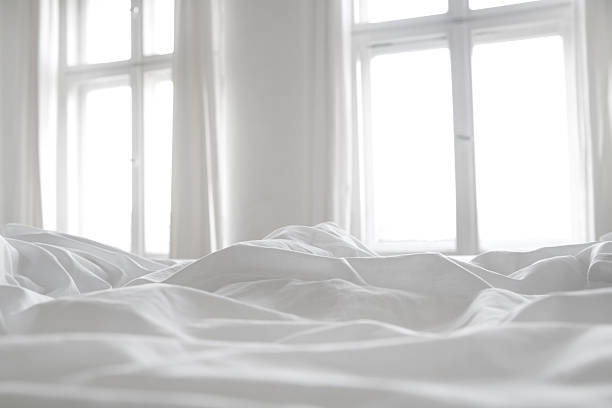Laundry Stripping Guide: Deep-Clean Your Linens for Fresh, Soft Fabrics
Laundry stripping is a deep-cleaning method that removes built-up grime, soap, fabric softeners, and body oils from your linens and fabrics. The process, though time-consuming, leaves your linens looking and feeling renewed. In this article, we’ll delve into what laundry stripping is, why it’s necessary, and how you can effectively get those stubborn stains and odors out of your fabrics.
What is Laundry Stripping?

Laundry stripping is a method of deep cleaning fabric to remove residues and buildup. Unlike regular washing, which only removes surface dirt, stripping targets the inner layers of fabric where detergent residue, hard-water minerals, and other contaminants accumulate over time. This process involves soaking your linens in a solution of hot water, detergent, and other cleaning agents for a prolonged period.
During the soaking process, these contaminants are loosened and lifted from the fabric, resulting in cleaner, fresher, and softer linens. It’s grossly satisfying to see the murky water that indicates just how much grime has been removed. Laundry stripping rejuvenates your fabrics and extends their life, helping you maintain hygienic and comfortable textiles.
Why Should You Consider Laundry Stripping?
There are several reasons why you might consider laundry stripping for your linens. Over time, repeated washing and the use of heavy-duty detergents cause a build-up of chemicals and residues. This can lead to fabrics feeling stiff, looking dingy, and harboring unpleasant odors.
For households with hard water, mineral deposits can make laundry feel extra rough and less absorbent. Pets, children, and frequent use can accelerate the accumulation of these residues. Additionally, those with sensitive skin may find relief from irritations that result from detergent residues by using stripped fabrics.
Laundry stripping offers a thorough clean that regular washing cycles simply can’t achieve. It revitalizes older fabrics, improving their look and feel, and it brings a fresh cleanliness that contributes to a more healthful living environment.
How to Strip Your Laundry: Steps and Ingredients
Here are the steps to strip your laundry effectively:
- Fill a bathtub or large basin with hot water.
- Add 1/4 cup of Borax, 1/4 cup of washing soda, and a standard serving of laundry detergent.
- Fully submerge your clean linens and agitate the water a bit to ensure the mixture dissolves well.
- Let your fabrics soak for 4-6 hours, occasionally stirring to help release the grime.
- After soaking, drain the water and transfer the items to your washing machine.
- Run the fabrics through a rinse cycle to remove any remaining residues or cleaning solutions.
Following these steps will leave your linens looking almost new and feeling crisp and clean. Make sure to wash them alone the first time afterward to avoid any risk of colors bleeding or residues transferring to other laundry.
Common Mistakes to Avoid
When it comes to laundry stripping, some common mistakes can undermine the effectiveness of the process. Using too much detergent can lead to buildup rather than removing it. Remember, the right balance is key to a successful strip.
Another error is not measuring the temperature of the water. It should be hot but not boiling, as extremely hot water can damage certain fabrics. Inconsistent stirring might prevent the cleaning agents from fully dissolving and spreading evenly.
Lastly, skipping a rinse cycle post-soak can leave residues stuck in the fabric. Ensuring thorough rinsing will help achieve the desired results.
Is Laundry Stripping Safe for All Fabrics?
While laundry stripping is highly effective, it’s essential to remember it’s not suitable for all fabrics. Delicate materials such as lace, silk, or wool can suffer damage through this intensive cleaning process. These fabrics are best cleaned using gentler methods designed for their specific care needs.
On the other hand, cotton, linen, and certain synthetic blends respond well to laundry stripping. Always check care labels before deciding to strip your laundry. Starting with less sensitive items may also be a good way to gauge how your fabrics will react.
Ultimately, understanding the fabric type and care requirements is vital to ensure that your stripping session is both safe and effective.
Conclusion
Laundry stripping is a powerful way to rejuvenate your linens and fabrics, providing a thorough clean that traditional washing can’t offer. By understanding the process, potential pitfalls, and fabric specificity, you can effectively strip your laundry and enjoy fresher, cleaner, and softer textiles. It’s a grossly satisfying yet highly rewarding process that can breathe new life into old fabrics.
FAQs
What items can be stripped?
Mostly, cotton, linen, and certain synthetics are ideal for stripping. Avoid delicate fabrics like silk or wool.
How often should I strip my laundry?
For best results, consider stripping your laundry every few months or when fabrics start to feel less fresh.
Can laundry stripping damage my washing machine?
No, as long as you rinse the fabrics well before putting them in your machine, there should be no damage.
Is laundry stripping necessary for new clothes?
Stripping new clothes is generally unnecessary unless they have a persistent odor or residue from manufacturing.
Can I use other cleaning agents?
Yes, but stick to those proven safe for laundry. Alternatives include vinegar or oxygen bleach, depending on fabric needs.
